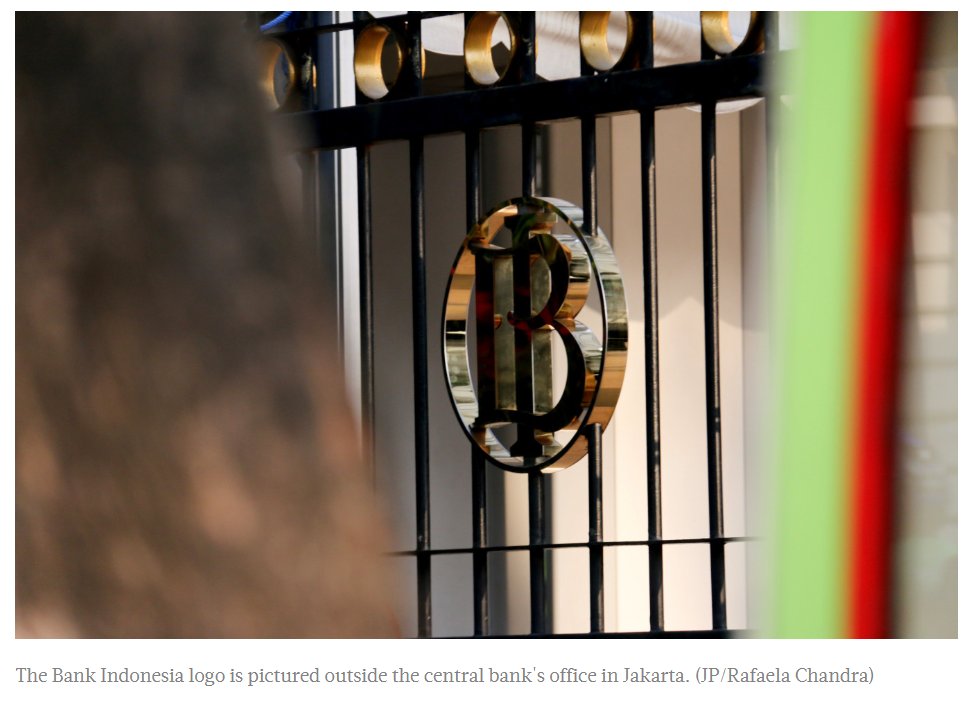Indonesia’s Q1 current account deficit narrows as imports fall
Indonesia’s current account deficit narrowed in the first quarter of this year as imports fell and the deficit in services dwindled amid the coronavirus pandemic, Bank Indonesia (BI) announced on Wednesday.
Southeast Asia’s biggest economy recorded a current account deficit (CAD) of US$3.9 billion, or 1.4 percent of gross domestic product (GDP) in this year’s first three months, down from 2.8 percent of GDP in the previous quarter.
Meanwhile, the balance of payments (BoP) was on the deficit side of $8.5 billion in the first quarter, following a $4.3 billion surplus in the fourth quarter.
“The improved trade balance was due to falling imports as domestic demand slowed. This reduced the impact of falling exports because of global economic contraction,” the central bank said in a statement.
“Meanwhile, the deficit in services improved following a lower deficit in transportation services due to falling imports despite a decreased surplus in travel services.”
Indonesia’s import value dropped 3.69 percent in the first quarter to $39.17 billion, Statistics Indonesia (BPS) data showed, resulting in a trade surplus of $2.62 billion as exports grew 2.91 percent to $41.79 billion.
At the same time, financial and capital accounts recorded a $2.9 billion deficit in the January-March period, compared with the previous quarter’s $12.6 billion surplus, following a jump in capital outflows as global investors dumped risky assets over fears of the pandemic.
BI recorded net outflows of $5.7 billion in the first quarter but capital started flowing in during April to May 14, resulting in $4.1 billion of net inflows.
“Going forward, we see that imports tend to keep decelerating more than exports due to a halt in some investment and production activities amid the COVID-19 pandemic,” Bank Mandiri chief economist Andry Asmoro wrote in a research note.
“In consequence, this may continue to improve Indonesia’s trade balance, thus shrinking the CAD this year,” he added. Mandiri estimated the full year CAD would be around 1.81 percent of GDP versus 2.72 percent last year.
BI on Tuesday projected that the CAD would hover at below 2 percent of GDP throughout this year from between 2.5 and 3 percent previously expected.
The central bank on Tuesday also decided to hold its benchmark interest rate at 4.5 percent as it worked to support the financial system stability, defying market expectation of a 25 basis point cut.
“We find it difficult to comprehend that BI decided to hold rates as economic growth proxies pointed to severe deterioration, while stability indicators such as current account balance signal improvement in rupiah fundamentals,” Bahana Sekuritas economists wrote in a research note on Wednesday.
“Our sense here is that BI sees the future interest-rate direction in Indonesia as a moving target depending on COVID-19 developments,” they added.
The narrowed current account deficit and agenda to bolster the domestic economy will support the central bank’s agenda to have an accommodative monetary policy stance going forward, Andry said.
“Factors limiting a further policy rate cut are potential risk on BoP in 2020, specifically from the financial account that may affect rupiah exchange rate stability and a surge in budget deficit to 6.27 percent of GDP,” Andry said. “We see that to ensure adequate liquidity in order to support domestic economic recovery, BI will look to quantitative easing measures.”
Source: https://www.thejakartapost.com/news/2020/05/20/indonesias-q1-current-account-deficit-narrows-as-imports-fall.html


 English
English




